- Yokohama-shi Top Page
- Municipal Government Information
- Public Relations, Public Information, News
- Publications and publications
- PR printed materials
- Public information Yokohama
- Public information Yokohama city version
- Public information Yokohama Plus
- 2021 edition
- June issue useful in case of emergency! Report on Wind and Flood Damage Experience Tour
Here's the text.
June issue useful in case of emergency! Report on Wind and Flood Damage Experience Tour
In Yokohama Disaster Risk Reduction Learning Center, you can learn about disaster prevention and reduce disaster damage through the Wind and Flood Damage Experience Tour and Earthquake and Fire Experience Tours. This time, I went to a storm and flood experience tour!
Last Updated January 19, 2024
reduce disaster damage Training Room, where you can experience evacuation behavior
The first thing I experienced was the reduce disaster damage Training Room. If a typhoon is approaching when you are at home, you can learn what action should be taken. I acted on a map (hazard map) that allows me to grasp the situation around the house and information flowing from the TV, and learned whether my judgment was appropriate.
First of all, experience!
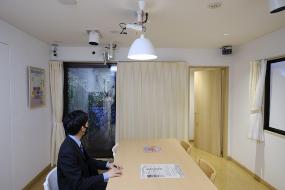
1.It was heavy rain outside, and the wind became stronger.
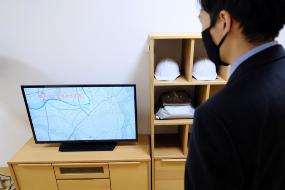
2.Since a heavy rain flood warning was announced in the city, we moved to evacuation behavior.
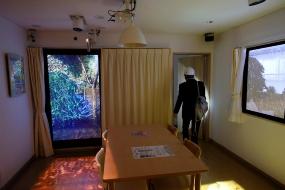
3.While I was worried about whether to go outside or indoors, the window glass was broken by strong winds, earth and sand flowed into the room, and forced to evacuate to the second floor.
In the case of my evacuation behavior, I evacuated to the second floor while the house was flooded, so I became a "rescueer" who could not help without rescue.
After the simulation, you can teach you the correct evacuation method, so please try it out! !
I was also able to experience using AR.
From April of this year, we have been able to experience using AR (Augmented Reality). Looking at the situation when the house was flooded through a smartphone, my thoughts on disaster prevention has become stronger.
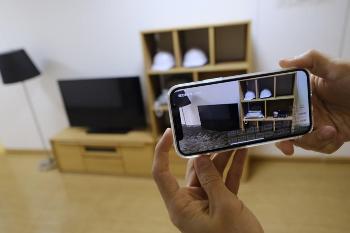 Assumed inundation 0.5 meters
Assumed inundation 0.5 meters
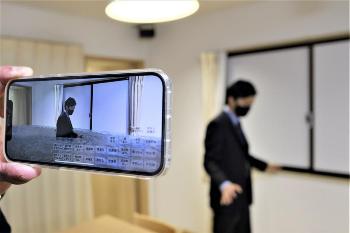 As flooding progresses, the house is no longer in a safe state.
As flooding progresses, the house is no longer in a safe state.
"Disaster Theater" where you can learn from video
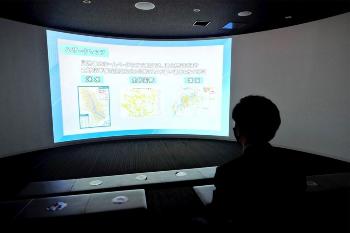
At the disaster theater, when a typhoon approached, we watched a video about evacuation behavior that compares the two, "If your home is okay and neglected the disaster" and "when evacuation behavior based on evacuation information" . Through the video, I was able to learn about the importance of evacuation information sent by local governments and the self support and community support (*1).
What surprised me through this video learning was about the high reliability of the hazard map. A hazard map is a map (* 2) that is used as a basis for evacuation actions, assuming the range of damage caused by natural disasters. When a disaster actually occurred, the damage range assumed in the hazard map was almost the same as the actual damage range, so the importance of the hazard map was reaffirmed, not after the disaster occurred, I felt that I wanted to check in advance about the area where I lived.
※1: self support = protecting yourself, and community support = helping each other
※2: Please confirm "map of disaster prevention" about hazard map map maps of each ward.
"My Timeline" that considers your evacuation behavior in advance
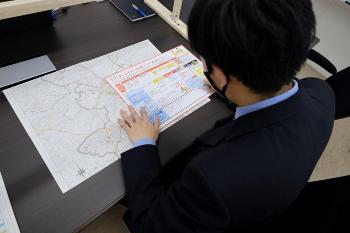
After learning about the importance of evacuation behavior based on hazard maps and evacuation information at the Disaster Theater, I created a My Timeline.
My Timeline is an evacuation action plan that organizes in advance in chronological order for possible disasters, such as floods caused by typhoons and heavy rains, according to their family structure and local environment.
When creating your My Timeline, first use a hazard map to check if your area is at risk of flooding or landslide. Next, we know if there are elderly people, people with disabilities, infants, pregnant women, pets, etc. in the home and need assistance during evacuation, and create your own action plan for each alert level.
It is a valuable opportunity to give advice on evacuation behavior directly from the disaster prevention center!
Experience evacuation in the event of storm and flood damage in virtual space! "VR Wind and Flood Damage"
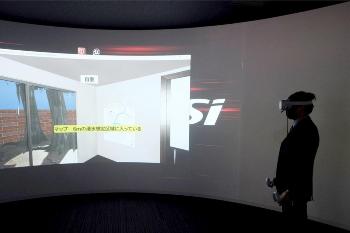
In addition to wind and flood damage experience tours, Yokohama Disaster Risk Reduction Learning Center also offers a hands-on program that allows students to learn useful techniques and knowledge in the event of a disaster.
This time, we experienced "Wind and Flood Damage VR" using VR (virtual reality) from them. In VR, storm and flood damage, we will select evacuation behavior for each of the three stages (home, residential area, and building district) and aim for evacuation sites. This is a content where you can learn about correct evacuation behavior based on real disaster experiences. I hope everyone will experience it.
Facility introduction
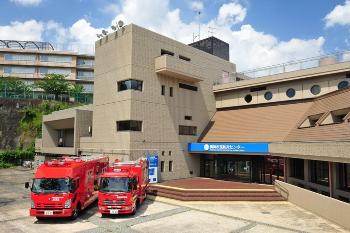
Yokohama Disaster Risk Reduction Learning Center
4-7, Sawatari, Kanagawa-ku
Please check here for details on how to book a trial tour. (External Site)
For inquiries to this page
Yokohama Disaster Risk Reduction Learning Center
Phone: 045-312-0119
Phone: 045-312-0119
Fax: 045-312-0386
Page ID: 546-195-890







